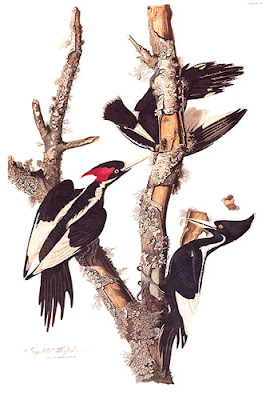The Martins were a family of bird lovers, or so it seems from a number of ornithological references in the Martin House Complex and related collections.
First, consider the curious "martin" houses that Frank Lloyd Wright designed for the roof of the conservatory (see last week's discussion). Then, note that there are three Japanese woodblock prints with bird subjects that once hung in the Martin House (and exacting reproductions will hang there again). Last but not least is a jewel of the Martins' extensive library; as Darwin D. Martin notes in his journal:
At Christmas gave family Audubon's 7 vol. 1842 edition of "Birds of North America" of which but 1000 sets were published. (December, 1911)
 Martin apparently is referring to the Royal octavo edition of Birds, available for the prodigious sum of $100, rather than the more rare "Double Elephant folio," one of which sold at Christie's in 2000 for 8.8 million dollars (a record price for a printed book). Unfortunately, Martin's prized set of Birds does not survive in the Martin House collection today; its ultimate disposition is unknown.
Martin apparently is referring to the Royal octavo edition of Birds, available for the prodigious sum of $100, rather than the more rare "Double Elephant folio," one of which sold at Christie's in 2000 for 8.8 million dollars (a record price for a printed book). Unfortunately, Martin's prized set of Birds does not survive in the Martin House collection today; its ultimate disposition is unknown.
With Audubon's compendium on the shelves, hawk, crane and peacock prints on the walls and "martin" houses atop the conservatory, the Martins' interest in birds was evident in the design and decoration of their home - no mere flight of fancy.
L: Ivory-billed Woodpecker from Birds of America
R: "Hawk in Pine Tree" print from the Martin collection









